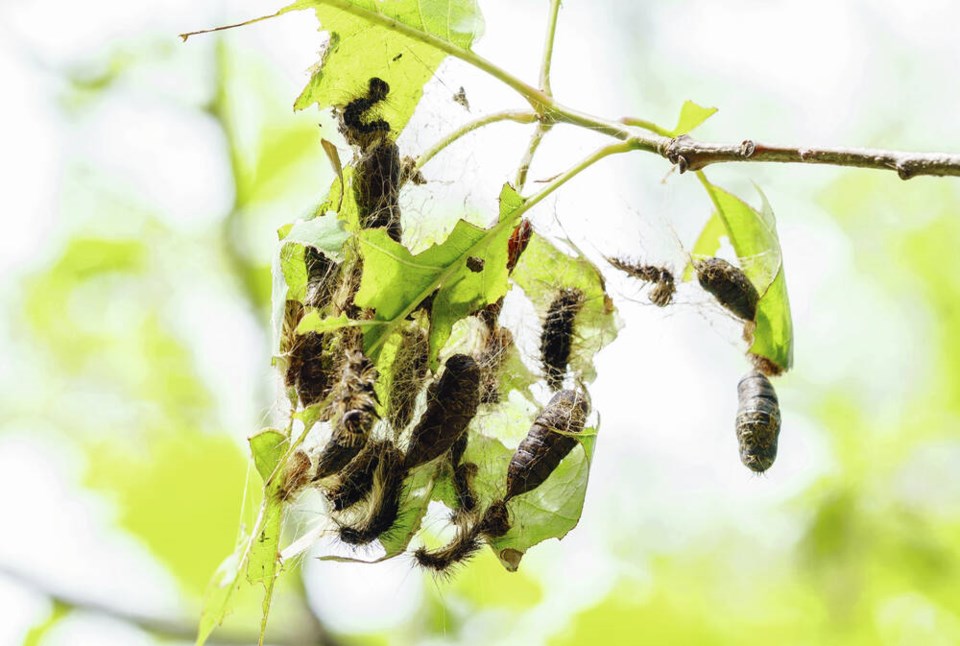The province is preparing to spray areas of Vancouver Island this spring for spongy moths — formerly known as gypsy moths — deemed a threat to forests, farms, orchards and urban trees.
Three treatments are planned for specific areas in Greater Victoria, Courtenay, Campbell River and Port Alberni between April 1 and June 30 to prevent invasive spongy moths from becoming permanently established.
According to the Ministry of Forests, spongy moths, also known as Lymantria moths, pose a risk to B.C.’s ecosystems and the economy, as their caterpillars feed on tree leaves and in recent years have defoliated forests and urban areas in Ontario and the eastern U.S.
In B.C., they’re seen as a threat to Garry oak, arbutus, red alder, aspen, cottonwood, maple, fruit and nut trees and ornamental trees, and affect local pollinators that rely on those trees, the Forest Ministry says in a news release.
Spongy moths can also affect apple trees, blueberry bushes and other food crops as well as garden nursery products.
Infested operations often have to be quarantined, and may have to undergo additional measures such as certification and increased pesticide use, the Forests Ministry said.
“Also, a permanent spongy moth program would require B.C. agricultural and forest products to be subject to restrictions at the U.S. border,” it says, which could result in delays and additional expense to export these products.
The increased threat is tied to outbreaks in Ontario and Quebec in the past three years. Egg masses are commonly brought to B.C. on recreational vehicles.
A record number of male spongy moths were trapped in B.C. last year by a monitoring program, which indicates they could become established in seven locations if the planned spraying is not completed, says the Forests Ministry.
The treatments will use the biological insecticide Foray 48B, whose active ingredient Btk (bacillus thuringiensis var kurstaki) has been approved for use in Canada since 1961. According to the ministry, Btk is used in organic farming and is naturally present in urban, agricultural and forest soils throughout the province.
Scientific studies have concluded it poses no threat to people and does not harm mammals, birds, fish, plants, reptiles, amphibians, bees or other insects, the ministry says.
“It only affects spongy moth caterpillars and is specific to their digestive systems,” it says, noting the caterpillars ingest the treated vegetation.
In Greater Victoria, the treatment areas are in View Royal, Esquimalt and the Belmont area of the West Shore.
The province is inviting residents in the planned spray areas to submit comments about the pesticide use permit application by Feb. 21.
To learn about spongy moths, call 1-866-917-5999, toll-free; or visit: gov.bc.ca/spongymoth
For information about the pesticide-use permit application or to see a map of planned treatment areas, visit: gov.bc.ca/spongy-news.



